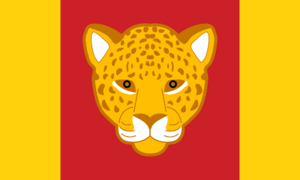Quariwarmi
In Peru, the pre-colonial Inca civilization had shamans called quariwarmi, meaning "men-women," who were a mixed-gender role. Andean Studies scholar Michael Horswell writes that third gender ritual attendants to Chuqui Chinchay, a jaguar deity in Incan mythology, were "vital actors in Andean ceremonies" prior to Spanish colonisation. Horswell elaborates: "These quariwarmi (men-women) shamans mediated between the symmetrically dualistic spheres of Andean cosmology and daily life by performing rituals that at times required same-sex erotic practices. Their transvested attire served as a visible sign of a third space that negotiated between the masculine and the feminine, the present and the past, the living and the dead. Their shamanic presence invoked the androgynous creative force often represented in Andean mythology."[1] Richard Trexler gives an early Spanish account of religious third gender figures from the Inca empire in his 1995 book "Sex and Conquest":
| « | And in each important temple or house of worship, they have a man or two, or more, depending on the idol, who go dressed in women's attire from the time they are children, and speak like them, and in manner, dress, and everything else they imitate women.[2] | » |
This description draws into question whether the quariwarmi considered themselves a gender outside man or woman, or if they considered themselves women. In the 2019 Worldwide Gender Census, no respondents called themselves quariwarmi.[3]
References
- ↑ Horswell, Michael J. (2006). Transculturating Tropes of Sexuality, Tinkuy, and Third Gender in the Andes, introduction to "Decolonizing the Sodomite: Queer Tropes of Sexuality in Colonial Andean Culture". ISBN 0-292-71267-7. Article online.
- ↑ Trexler, Richard C. (1995). Sex and Conquest. Cornell University Press: Ithaca. p. 107
- ↑ "Gender Census 2019 - The Worldwide tl;dr." Gender Census (blog). March 31, 2019. Retrieved July 7, 2020. https://gendercensus.com/post/183843963445/gender-census-2019-the-worldwide-tldr Archive: https://web.archive.org/web/20200118084451/https://gendercensus.com/post/183843963445/gender-census-2019-the-worldwide-tldr

